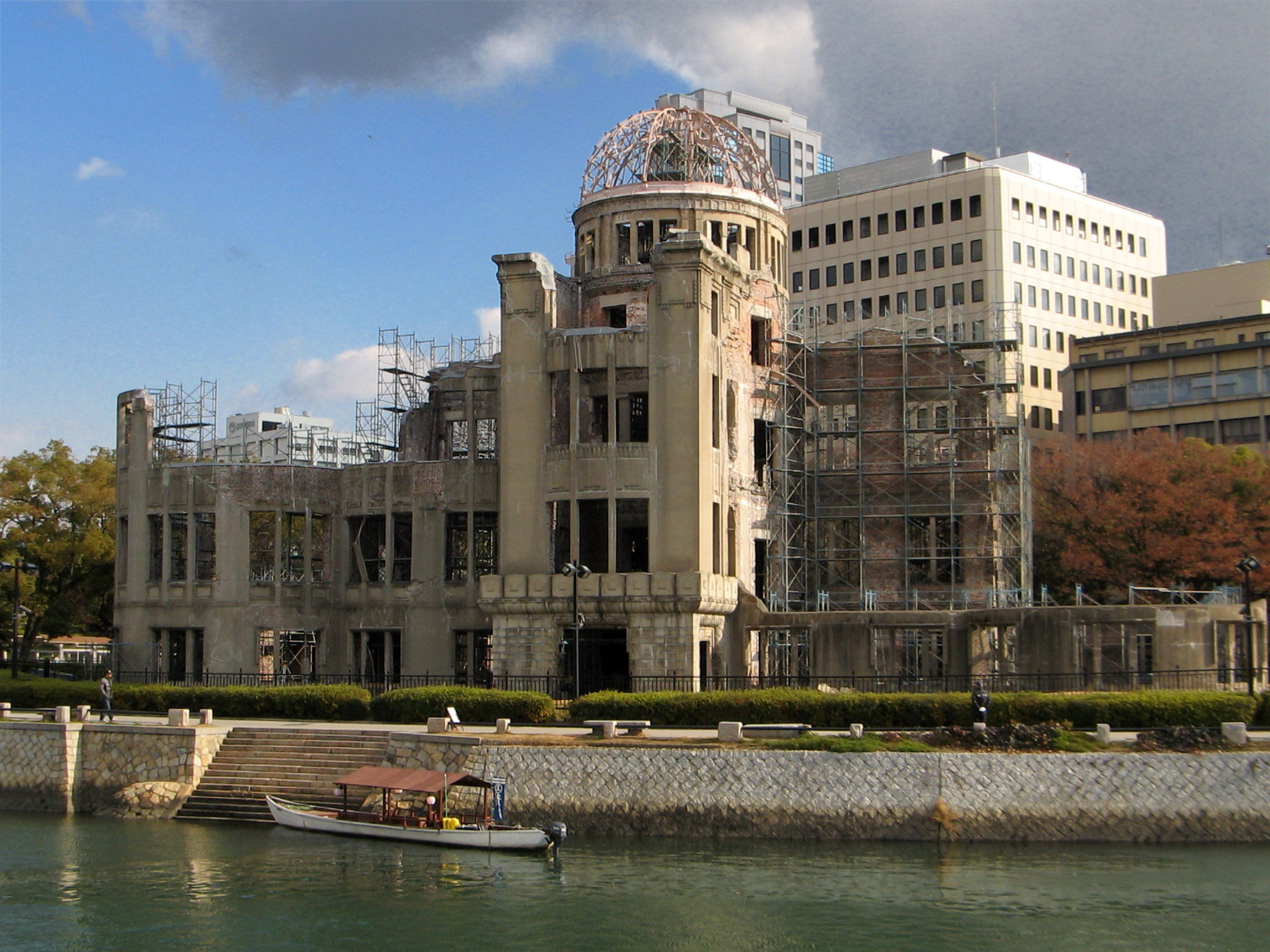
Hiroshima Prefectural Industrial Promotion Hall, Hiroshima Japan
The Hiroshima Prefectural Industrial Promotion Hall, which stood very close to the bomb's hypocentre. The skeletal structure of the dome is now known officially as the A-bomb Dome..

Ruin of Hiroshima Industrial Promotion Hall or ABomb Dome, Hiroshima, Japan Stock Photo Alamy
The iconic remains of the Hiroshima Prefectural Industrial Promotion Hall, now known as the Hiroshima A-Bomb Dome (原爆ドーム), have become a symbol of both the horror of nuclear war and the hope for peace. Designed by Czech architect, Jan Letzel, the building, originally named the Hiroshima Prefectural Commercial Exhibition Hall was.
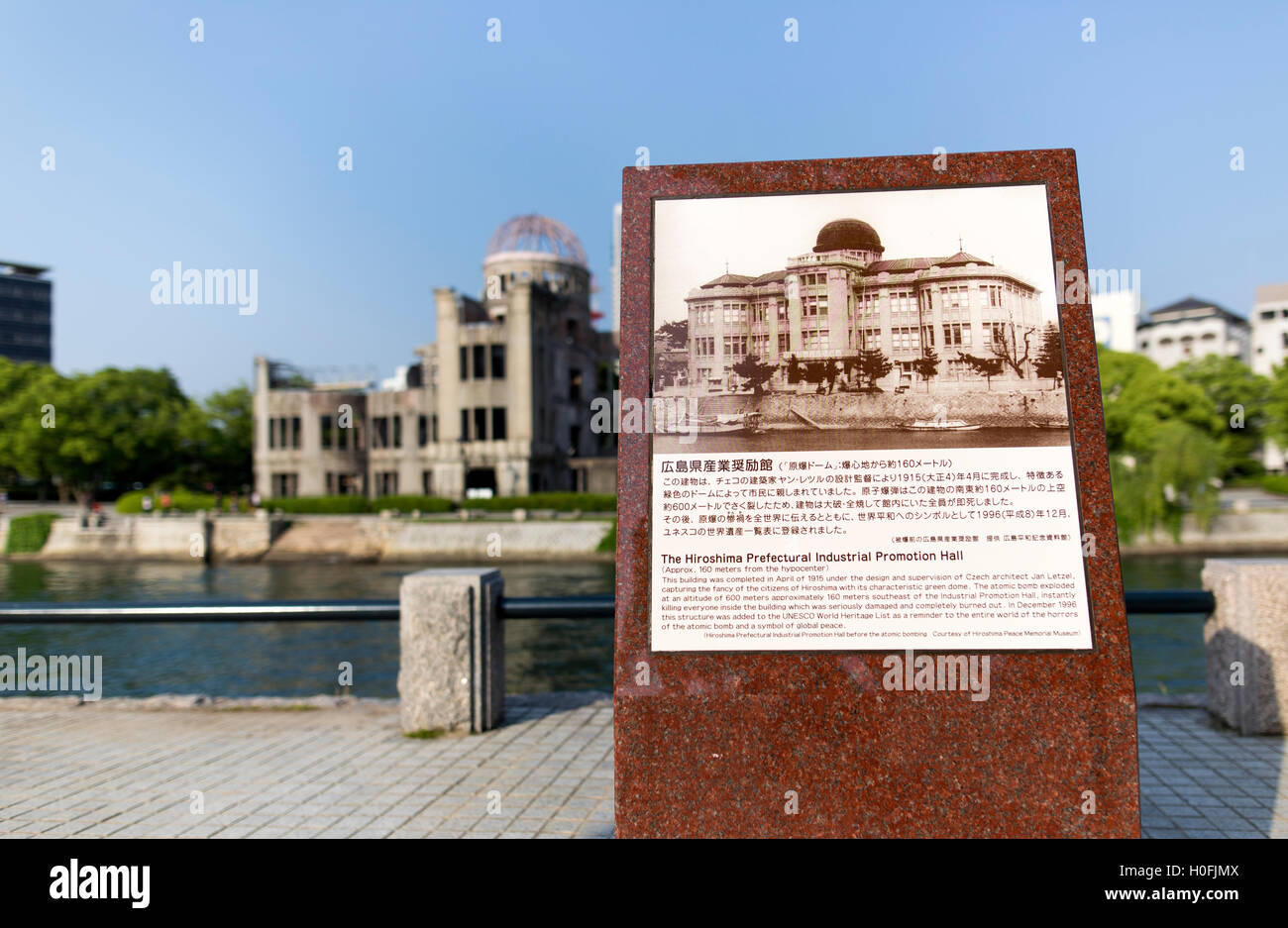
Hiroshima Industrial Promotion Hall, a history of the explosion in English and Japanese Stock
The Hiroshima Peace Memorial (広島平和記念碑, Hiroshima Heiwa Kinenhi), originally the Hiroshima Prefectural Industrial Promotion Hall, and now commonly called the Genbaku Dome, Atomic Bomb Dome or A-Bomb Dome (原爆ドーム, Genbaku Dōmu), is part of the Hiroshima Peace Memorial Park in Hiroshima, Japan and was designated a UNESCO World Heritage Site in 1996.

Japan Hiroshima Peace Park Industrial Promotion Hall (ABomb Dome Stock Photo Alamy
#peacetimes The atomic bomb dome, the world cultural heritage site, which many people from Japan and the world visit, was a show space to expand sales channels for products of Hiroshima as the name of the Industrial Promotion Hall. In this article, we introduce the history of the atomic bomb dome.

Atomic Bomb Dome (Genbaku Domu), Hiroshima Industrial Promotion Hall, Peace Memorial Park
The A-bomb Dome (Genbaku Dome), a silent sentinel on the Motoyasu Riverbank, is what remains of the once-thriving Hiroshima Prefectural Industrial Promotion Hall.On August 6, 1945, at 8:15 A.M., the atomic bomb detonated nearly directly above the building, just 160 meters to the north-east. This unique circumstance led to one side of the structure being devastated, while the other remained intact.
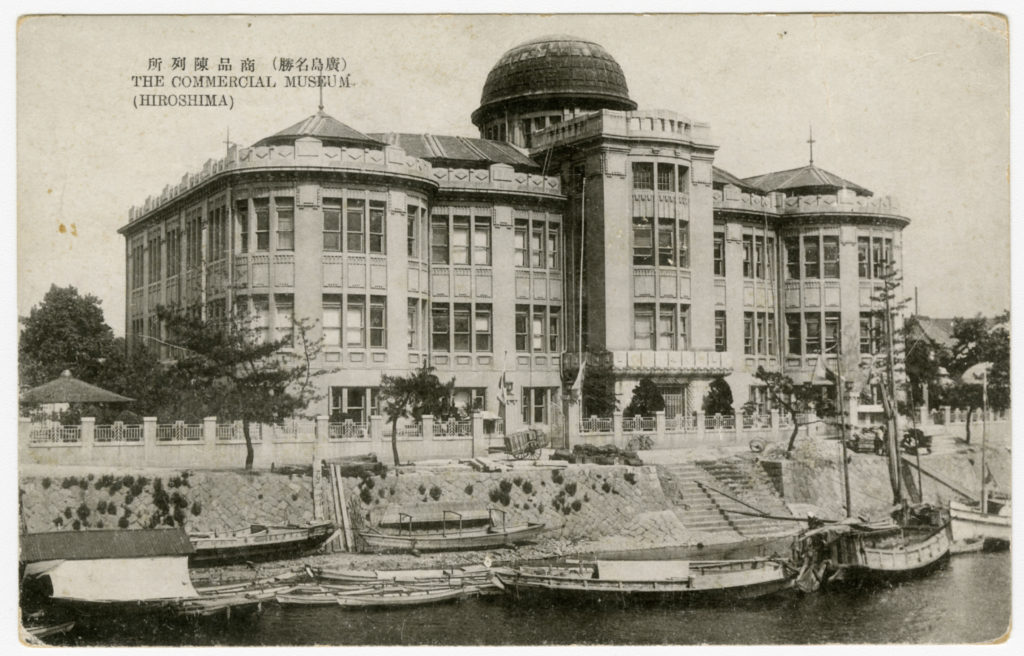
Building, Column 3 “Atomic Bomb Dome (Originally the Hiroshima Prefectural Industrial Promotion
Showa 20 (1945) august 6, 8:15 a.m. The first atomic bomb in human history exploded at an altitude of about 160 meters southeast of the Hiroshima Prefectural Industrial Promotion Hall and about 600 meters.

Hiroshima Prefectural Industrial Promotion Hall We arrived… Flickr
This occurred on August 6, 1945 in the Pacific theatre World War II, at 8:15 a.m., when the United States Army Air Forces (USAAF) dropped the atomic bomb " on the city. [5] Most of Hiroshima was destroyed, and by the end of the year between 90,000 and 166,000 had died as a result of the blast and its effects.
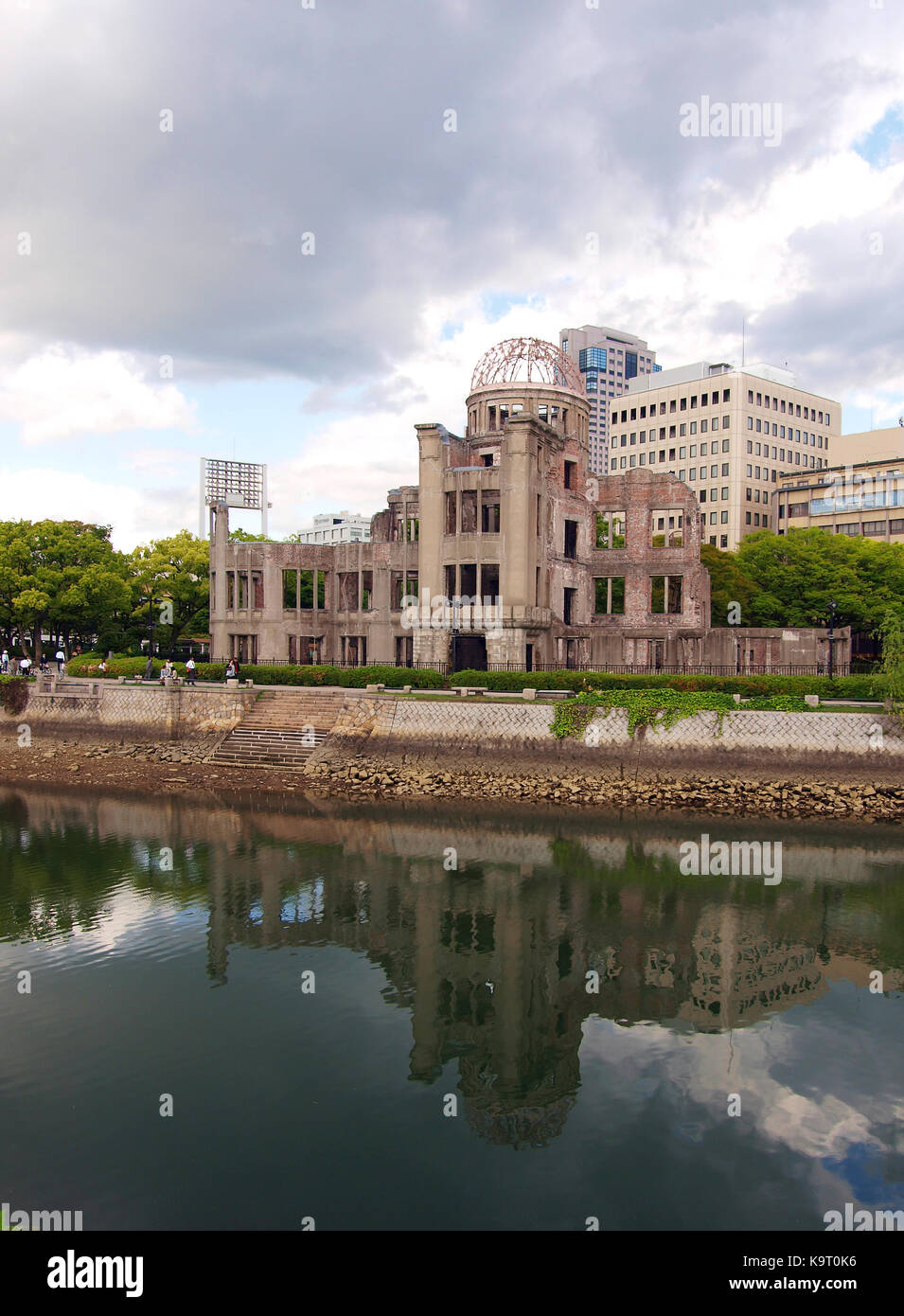
The Hiroshima Prefectural Industrial Promotion Hall destroyed by abomb Stock Photo Alamy
In 1933 it was renamed the Hiroshima Prefectural Industrial Promotion Hall. However, after 1944, the building was used by public organizations. Then, at 8:15 a.m. on August 6, 1945, an atomic bomb detonated 600 meters up in the air, about 160 meters southeast of the building.

Hiroshima Prefectural Industrial Promotion Hall, the "Atomic Bomb Dome" The World War II
The Hiroshima Prefectural Industrial Promotion Building was a six-story reinforced concrete building located in the city of Hiroshima, Japan. The building was completed in 1915 and was originally used as a prefectural office and a library. In August 1945, the building was destroyed by the atomic bombing of Hiroshima.

Pin on The End of WWII
The atomic bomb was dropped on Hiroshima on August 6, 1945, killing thousands instantly and about 140,000 by the end of the year. U.S. President Barack Obama will be the first sitting U.S. president to tour the site of the world's first atomic bombing on May 27, accompanied by Prime Minister Shinzo Abe. Oct 1945.
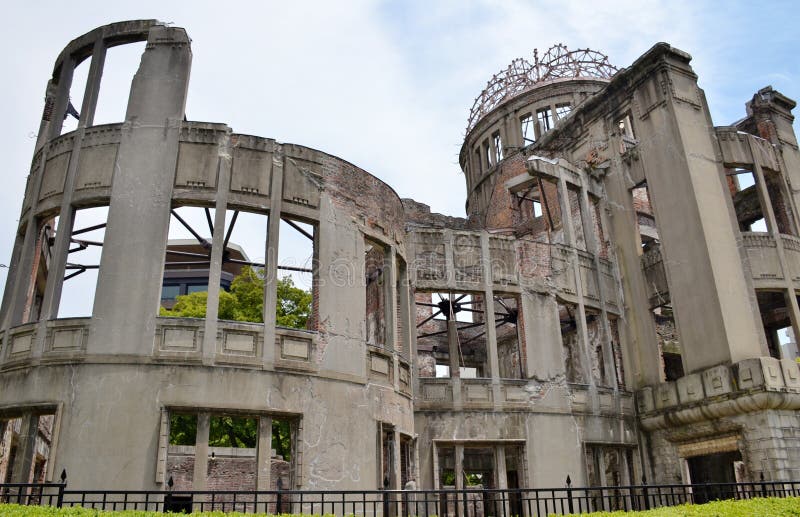
The aBomb Dome Hiroshima Prefectural Industrial Promotion Hall Stock Image Image of hall
The Atomic Bomb Dome. The Atomic Bomb Dome, formerly the Hiroshima Prefectural Industrial Promotion Hall, was designed by Czech architect Jan Letzl. It was highly acclaimed at the time of its construction in 1915 for its bold European design. At 8:15 a.m. on August 6, 1945, the building was destroyed by the world's first atomic bomb dropping.
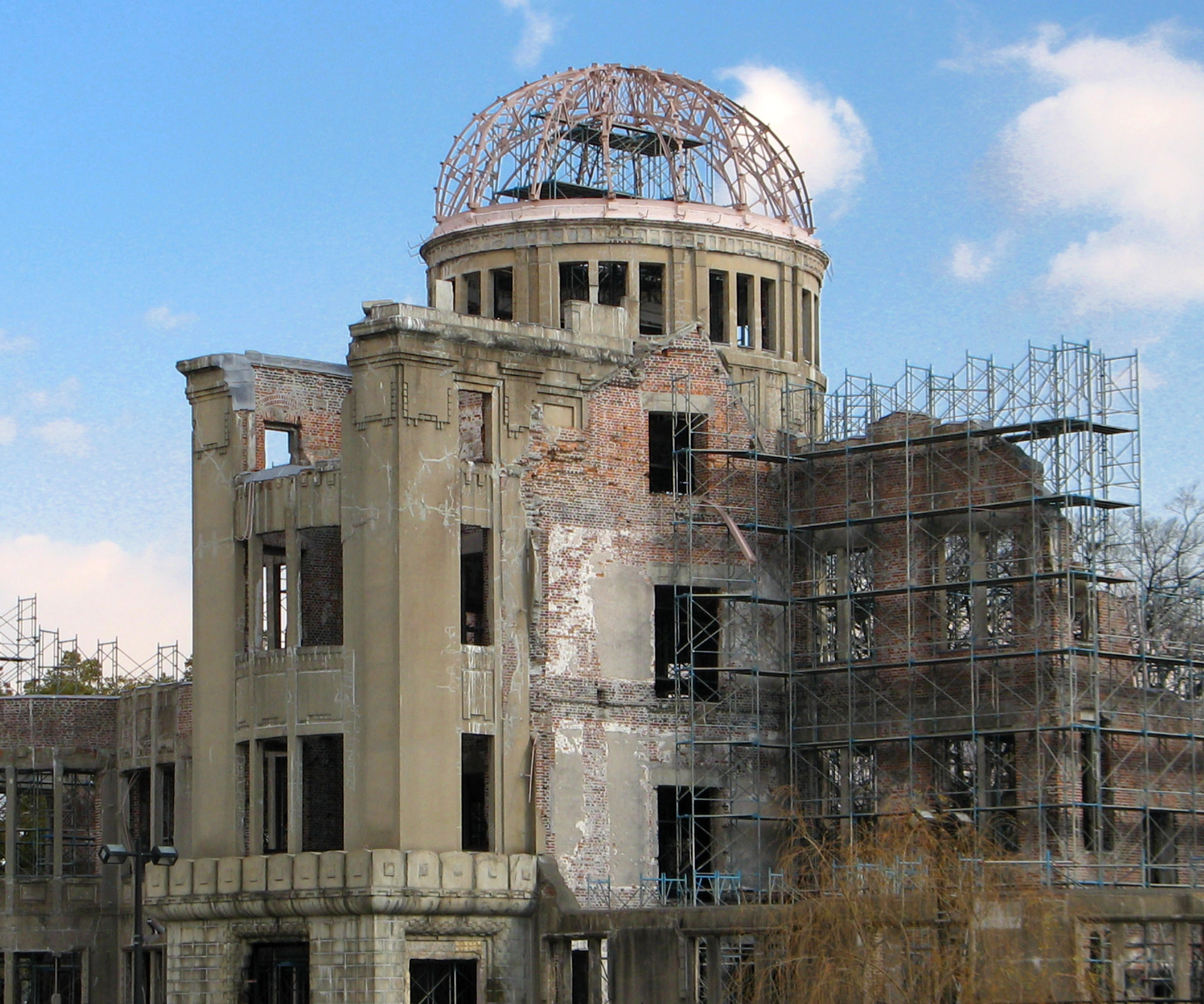
Ruin of Hiroshima Prefectural Industrial Promotion Hall
August 6, 2020 Top Image: The devastated downtown of Hiroshima with the dome of the Hiroshima Prefectural Industrial Promotion Hall visible in the distance. National Archives photo. By July 1945, Germany had surrendered, and the war in Europe was over. Japan, however, refused to submit to the terms outlined in the Allies' Potsdam Declaration.

Full Frame Hiroshima 70 Years After The Atomic Bomb 広島被爆70周年
His home had been next to Hiroshima Prefectural Industrial Promotion Hall, the now iconic building with the skeletal dome, preserved as an appeal for nuclear forbearance. Now in his early 80s, Tanabe is a handsome man, square jawed and silver browed.. the Hiroshima Prefecture Industrial Promotion Hall is a stark reminder of the devastation.

Ruin of Hiroshima Prefectural Industrial Promotion Hall, also known as Atomic Bomb Dome
1946. View of a partially destroyed building with dome, the Hiroshima Prefectural Industrial Promotion Hall (now the Atomic Bomb Dome), as seen from the partially destroyed Motoyasu Bridge, looking north. The Motoyasu River is in the foreground. The building was destroyed by the atomic bomb and allowed to stand as a reminder and memorial.

A look at the Czech architect who built Hiroshima's Industrial Promotion Hall today's ABomb
In 1934, the Industrial Promotion Hall established branches in Dalian and Xinjing in eastern China and Harbin in northeastern; and from 1938 it set up offices in Mukden, Tianjin, Shanghai, and in Kobe.
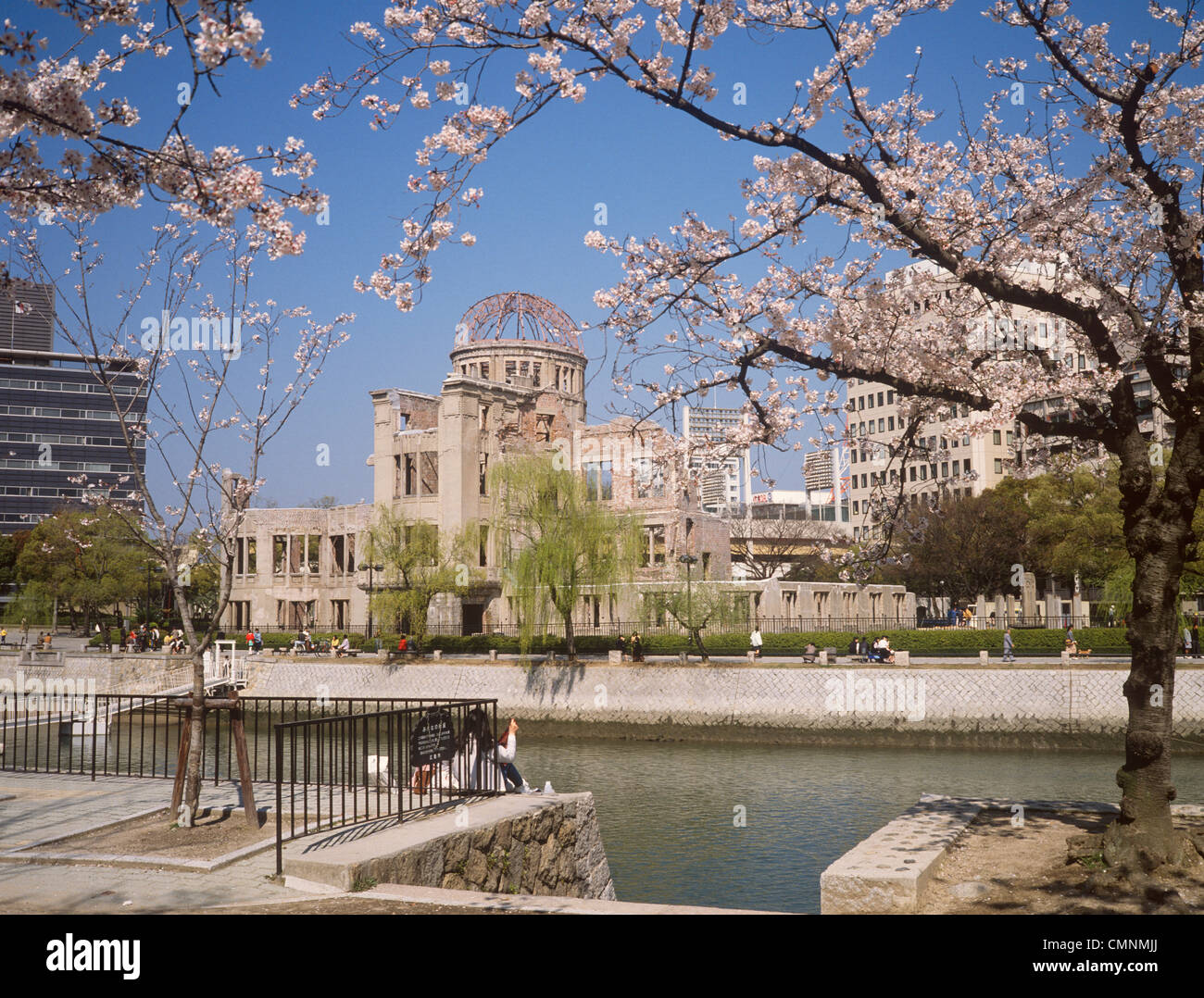
Japan Hiroshima Peace Park Industrial Promotion Hall (ABomb Dome) with Cherry blossom Stock
The building was later renamed the Hiroshima Prefectural Commodity Exhibition Hall in 1921, and the Hiroshima Prefectural Industrial Promotion Hall in 1933. (2) Before World War I, the Czech Republic was part of the Austro-Hungarian Empire. Vienna, which was at the center of the secession, is thought to have been a place that Letzel favored.